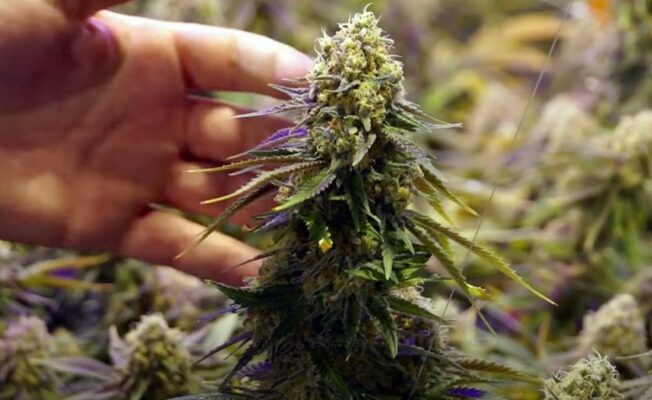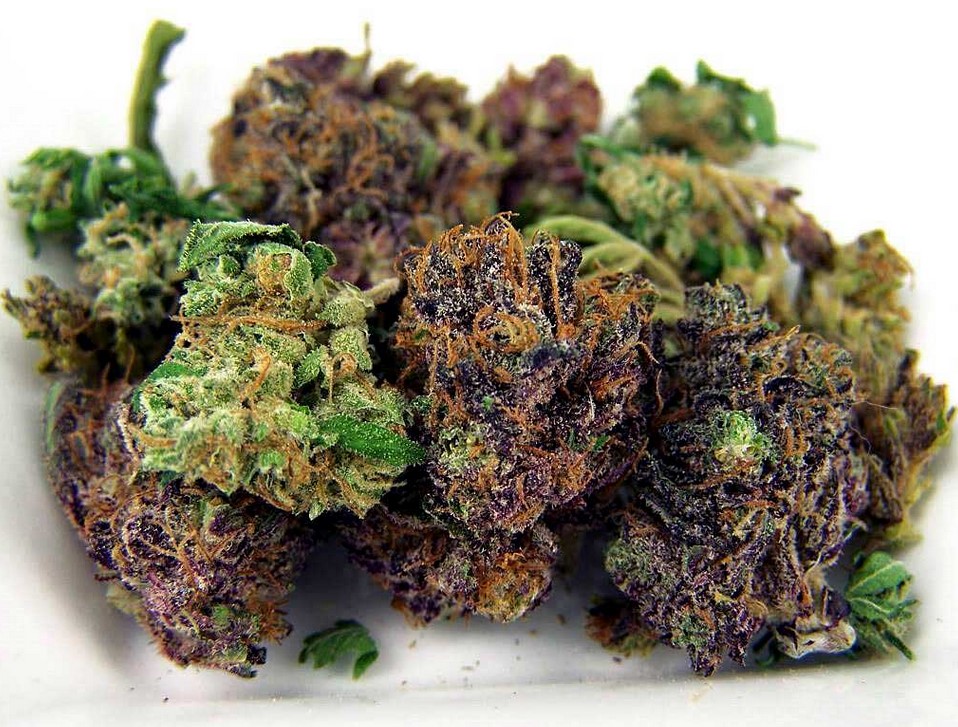Non classé
Cannabis Bloom Boosters Guide
Bloom boosters are a great way to get your plants the nutrients they need to produce strong, healthy buds. These easy-to-use formulas can help enhance flowering by providing accurate doses of key nutrients, humic acid, amino acids, enzymes, vitamins and growth stimulants. By using bloom boosters, you can give your plants a real boost during the flowering phase.
Many other plant species seem to thrive with little interference, so why does cannabis need a slew of bottled treatments to keep it from turning into a vegetable mess? Doesn’t all of that stuff on store shelves serve some purpose?
Cannabis growers take more time and care with their plants than those who grow other crops, like carrots or cabbages. And they should – as a valuable cash crop with unique phytochemistry, cannabis fetches a high price. Growers invest substantial time and money into ensuring they get the most from their plants.
This high demand for success in the market has led to many products that guarantee rich harvests, often at a price.
Bloom boosters are one of many formulas designed to help plants form large flowers. They contain nutrients that have caused controversy among cannabis growers about whether or not they are advantageous. In this article, we investigate the truth behind bloom boosters.
The Controversy Around Bloom Boosters for Weed
Are bloom boosters really as effective and good for your cannabis plants as people say? Or are there some potential drawbacks that you should be aware of? There are two main concerns around using bloom boosters: salt buildup, and redundancy. Let’s explore these a bit further.

Do Bloom Boosters Cause Salt Buildup?
Salt-based fertilizers, such as those found in plant growth stimulators, are known as soil boosters. We’re not talking about the salt you liberally sprinkle over a plate of chips. Salts are compounds produced by the combination of an acid and a base (a substance that neutralizes acids) in chemistry. Many are water soluble.
Monopotassium phosphate and magnesium sulphate are two examples of such salts. While adequate doses of these salts provide vital nutrients that fulfill critical physiological roles (for example, monopotassium phosphate is a source of phosphorus and potassium), excessive application may result in salt build-up in the growing medium.
Salts are water-insoluble and can “compete” with plants for moisture, resulting in “burning” of plant tissues when there is too much. Salt accumulation can also affect the soil’s pH (cannabis prefers slightly acidic soil), preventing essential nutrients from being absorbed—a condition known as nutrient lockout.
Because of the possible problems associated with high concentrations of these salts, some people in the cannabis community argue that most formulas contain too much phosphorus and potassium.
Do Cannabis Plants Even Need Bloom Boosters?
The fact that marketing is mostly about convincing people that they need a product, even if they don’t, is an example of this. There are simply too many kitchen appliances on the market for this to be a coincidence. You don’t require a “pepper prepper” to extract the seeds from bell peppers or a “taco holder” to fill tacos, yet marketers may mislead you into believing otherwise. Bloom boosters aren’t irrelevant, but they’re not required in all situations; in fact, some blooms can be harmed by them.
When you walk in the woods, a meadow of wildflowers, or even in your driveway alongside your neighbor’s plants, everything should be flourishing just fine without the hand of man throwing chemical fertilizers around. That’s because complex interactions between many organisms keep nutrients flowing effectively. Everything living eventually dies and other living things consume the organic matter that remains.
Example: Nitrogen
Let’s consider nitrogen as an example (a nutrient required in smaller amounts while flowering). Bacteria and fungi break down and consume all of the nitrogen in dead plant roots and above-ground tissues. Other organisms, microorganisms, and worms also play a role by consuming organic waste, or other living things that do.
When creatures die or get eaten, their bodies become mineralized nitrogen. This process happens when immortality is transferred from the creature’s remains into ammonia (a plant-available form of nitrogen.) Microorganisms help with this transformation by converting it into nitrates.
Growers can help create healthy soils rich in microorganisms and other plant life by leaving roots in the ground after harvest, mulching, planting cover crops, and avoiding tilling. Once these systems are established, bloom boosters become mostly unnecessary when growing cannabis. However, it may take some time to get such a system up and running if starting from scratch.

The Role of Cannabis Bloom Boosters
Despite these two basic concerns, the bloom-boosting market continues to expand, and many producers are obtaining excellent outcomes when utilizing them.
Bloom boosters, while having the potential to set a grow back when misused, and being of little use in an established living soil system, provide nutrients that cannabis plants require in high quantities during the flowering stage. They’re especially beneficial to growers starting from scratch, novice cultivators, and people who just want to apply pre-made cocktails rather than create sustainable soil life.
The Contents of Flower Booster Fertilisers
Cannabis plants have different nutritional demands during each growth stage; vegetative plants need different things than those in the flowering stage. Cannabis has a primary requirement for three macronutrients in the highest proportions, as a rule. Nitrogen (N), phosphorus (P), and potassium (K) are often represented as an N-P-K ratio on goods, such as 10-5-7.
Cannabis plants need nitrogen for several significant purposes, such as creating chlorophyll (which helps the plant photosynthesize) and constructing amino acids (i.e., proteins). In general, healthy cannabis plants have about 4% nitrogen in their above-ground tissues.
Nitrogen strengthens the plants’ green color and fuels leafy growth, so cannabis plants need more of this macronutrient during their vegetative stage. They still need it during flowering, but not as much, since they’re still producing leaves and bracts (specialized leaves that surround the lower portion of the hair-like stigmas).
The demand for nitrogen falls during the flowering stage of a plant’s life cycle, requiring more of the other two macronutrients. Bloom boosters help to alleviate this by providing varying levels of these molecules. Many products also contain micronutrients that assist with physiological processes and prevents nutrient deficiency.
Macronutrients
The label surrounding any bloom booster container will contain specific phosphorus and potassium salts, according to the package. These larger compounds include macronutrients in bounded forms, but when dissolved into water, they release micronutrients as ions. Let’s learn a little more about these two key characters:
- Phosphorous: Phosphorus is an important element for plants. It helps them grow and develop new tissues. Phosphorus is also needed for the flowering phase of cannabis plants. Plants that don’t have enough phosphorus will display stunted growth and dark-green leaves.
- Potassium: This element is critical for microscopic movements within cannabis plants; potassium allows water, carbohydrates, and nutrients to move freely in plant tissues. It also regulates enzyme activity, which produces adenosine triphosphate (ATP), the cellular unit of energy. Potassium helps oversee the opening and closing of small holes in leaf surfaces known as stomata, which play an important role in gas exchange. Potassium is key for big, healthy blooms because it helps the plant build strong stems. Stems support the weight of a cannabis plant’s expansion during bloom.
Secondary Macronutrients
Cannabis requires three primary macronutrients: nitrogen, phosphorus, and potassium. However, it also needs calcium, magnesium, and sulphur as secondary macronutrients. These aren’t required in the same quantities as NPK but are still essential for plant growth.
Fortunately, many bloom booster formulations include secondary macronutrients. Calcium and magnesium are frequently found in the forms of calcium bicarbonate and magnesium sulphate, which aid flowering cannabis plants in completing fundamental biological activities.
Plants absorb potassium, calcium, and magnesium in a similar way. This mechanism means that if growers aren’t careful, they might run into mineral deficiency problems. When high levels of potassium are added during the flowering period without additional magnesium or calcium, micronutrients are at risk of nutrient antagonism. They should be added when blooming nutrients are used to ensure that the concentrations remain balanced and that this problem doesn’t arise.
The Benefits of Weed Bloom Boosters
Although often overlooked, bloom boosters can offer some real benefits to your flowering cannabis plants. Some of the best reasons to use these fertilisers include:
Convenient
Bloom boosters are a convenient way to get the nutrients your plants need during flowering, and they are especially helpful for people who want to harvest quickly without spending a lot of time learning about organic soil techniques.
Accurate
Bloom boosters make it easy for growers to feed their crop the right amount of nutrients needed for flowering. Each product comes in either tablet or liquid form and contains a set amount of salts that are easy to measure.
Easy to use
With these inorganic nutrients, your plants will get a quick and easy boost of goodness. Just mix them with water at the desired concentration, and you’re all set!
Organic options
Gardeners who prefer organic and regenerative methods can administer bloom boosters using organic sources. Worm castings-based aerated compost teas offer a high quantity of beneficial microbes along with calcium, phosphorus, and potassium. KNF solutions such as water-soluble calcium phosphate also quickly deliver this micronutrient when sprayed on leaves.
Downsides of Marijuana Bloom Boosters
However, bloom boosters can also cause problems for growers, especially when they are used incorrectly. The following are some of the major difficulties that bloom boosters create:
Easy to overfeed
Although bloom boosters are simple to use, they’re also easy to overfeed and new users are especially susceptible.
Nutrient lockout
These products can cause nutrient antagonism, nutrient lockout, and undesirable pH changes if used excessively. Fortunately, there are methods to mitigate nutrient lockout before it gets out of hand, such as flushing your soil with pH-balanced water and increasing the levels of micronutrients like calcium and magnesium.
Tissue burn
Too many nutrients can damage roots and leaves, leading to unattractive plants that need time to heal. This can reduce yield later on.
Microbial impact
There are two opposing views on the effect of inorganic fertilizers on soil microbiomes. Some claim that chemical inputs kill beneficial soil life and disrupt natural nutrient cycling, especially when utilized in excessive amounts. The argument against this is that chemical fertilisers, while they feed some organisms, do not harm them when used appropriately.
When to Use Bloom Boosters
Bloom boosters are typically used when plants have already started to bloom. However, autoflowering varieties will do this based on their internal biological clock, whereas photoperiod strains rely on external light cues—such as reduced sunlight hours or a switch to artificial light indoors for 12 hours straight.
The initial week or two of flowering is commonly referred to as the flowering stretch. This final burst of growth happens so that some growers wait to apply bloom boosters until they notice flowers actually beginning to form. A good indicator that it is time to switch your nutrient regimen over to a flowering formula is when you see flowers starting at the nodes (the points where branches intersect with the main stem).

How to Use Bloom Boosters
With inorganic bloom boosters, always follow the instructions on your product of choice as there is no one-size-fits all approach. This is because different products have varying formulas and strengths. They are best applied at slightly different times and in different ways depending on their composition; however, each product should provide clear guidelines on correct application.
Finally, bloom boosters are used for one of two primary goals: to improve the nutrient content of good soil and prevent shortages, or to repair depleted soils and eliminate deficiencies.
If your soil is already healthy, you can use bloom boosters to make sure your flowering plants get all the nutrients they need for healthy and phytochemical-rich buds. This will prevent problems further down the line.
Bloom boosters, on the other hand, function more as a lifeline if you’re growing with terrible soil. Because to the absence of bacteria and nutrient cycling in the soil, the plant becomes reliant on the grower for adequate flowering nutrients. You can still produce excellent crops with this method, just like many gardeners do every year.
In short, bloom boosters are like vitamins for your plants. They can be used to correct deficiencies in nutrients, pH levels, and other issues that might be causing plants to exhibit symptoms of distress. By correcting the “root” cause of the problem and giving plants a dose of bloom booster, you can help them restore balance and recover more quickly.
RQS Bloom Boosters
Our Bio Flowering Booster Pack at RQS was created based on decades of cultivation expertise. Each pack contains three 75ml bottled treatments that are 100% vegan. Below you’ll discover how and when to use each one.
- Thicker Flowers: Thicker Flowers is a liquid mixture of phosphorus and potassium that encourages flower formation and growth. Apply 0.1ml per litre with each watering as plants begin to bloom. Increase the rate by 0.1ml every week until week seven of blooming, at which time reduce the amount to 0.5ml for one week before reducing it again to zero on week nine (top right). If you use Thicker Flowers in conjunction with RQS Bat Guano or Easy Bloom, be on the lookout for nutrient toxicity indications.
- Bigger Flowers: You’ll get a lot of bang for your buck with this bottle. Enzymes, vitamins, and growth stimulants are all used to create large and dense colas. To receive the maximum benefits, apply this solution throughout the entire growing cycle. During the vegetative stage, use 0.5ml per litre of water; during week three of flower development, use 0.8ml; and during the rest of flowering duration, use 1m ln total. Bigger Flowers is safe to use with all RQS goods.
- Sweeter Flowers: If you want your buds to have a knockout aroma, give them this bottle of amino acids and potassium during the final four weeks of flowering. Just add 0.4ml per litre of water during week five, 0.7ml during week six, 0.8ml during week seven, and 1 ml during week eight.
Cannabis Bloom Boosters: A Nuanced Input
There’s a lot to consider when feeding a cannabis plant, as you know. Bloom boosters aren’t required by every cannabis producer; rather, they are utilized by seasoned growers who have spent several seasons developing healthy living soil. However, bloom boosters offer novices and casual gardeners a practical approach to guarantee that their plants receive all they require to produce a good yield.


